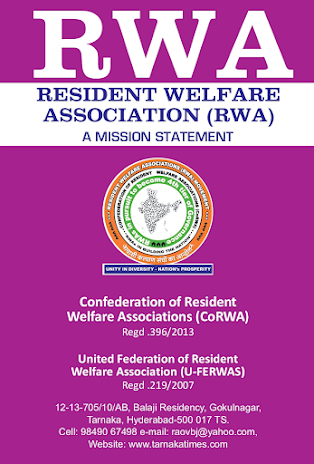Water is important for every citizen. There are two aspects of water – one is natural water from rivers and dams and the second is rain water. Of late as a result of scanty rainfall many places are facing drought.
In this context it is significant that the NDA 2 government under the stewardship of Prime Minister Narendra Modi felt it important to create a separate Ministry of Jal Shakti in May 2019. This was formed by merging two ministries – the Ministry of Water Resources, River Development & Ganga Rejuvenation and the Ministry of Drinking Water and Sanitation.
The two facets of water management – water conservation and rainwater harvesting gain significance.
Water conservation
Simple techniques like for instance diverting run off from washing machines for flushing toilets can save hundreds of litres of water. For effective water conservation everybody can make a difference by the following these five simple methods:
- Stop leaking taps, by taking immediate repairs
- Keep one litre bottle in the flush tank. This will reduce the outflow during flushing
- Use adjustable flush tank, which is now available in the market, for short and long flushing
- Take a bucket bath instead of a shower. This will avoid lot of wastage of water during shower
- Turn off tap while brushing teeth and usea mug for shaving
If each one saves one litre (ONE MUG) a day, we could save a MILLION LITRES A DAY!
Rainwater is the purest form of water apart from distillation. Mumbai is blessed with abundant rainfall most of the times, leading to flooding in low lying areas. We get lot of rain yet we do not have adequate water because we allow almost all of it to flow into the sea. It will not matter how much rainfall we get if we do not utilize this resource. So we need to look at this FREE source of PURE water differently.
Is it not possible to harness the rainfall to supplement some of the water needs? Even if we were to use rainwater only during the monsoons, there will be an overall reduction in the amount of water needed from the dams. This in turn will allow the water levels to remain high for at least a couple of months more than at present and the water shortage in summer can be reduced.
Rainwater harvesting
We are hearing a lot about Rainwater Harvesting (RWH). In fact, the Municipal Corporation of Greater Mumbai has made it mandatary for new constructions to have RWH systems. But how do we go about it?
Rainwater Harvesting in simple terms is the direct collection of rainwater (as shown in the image below). Rainwater collected can be stored for direct use or can be used to recharge ground water.
Direct use
Rainfall from your terrace/roof can be channelized into an underground storage tank (after it passes through a filter bed) and can be used during the monsoons for flushing, for car washing and washing clothes. Being soft water, you save on detergents and softener. It can also be used for gardening.
The solution is inexpensive. A 20,000 litre tank would cost not more than Rs.2000 per flat, less than your annual cable TV subscription. Further it requires very little maintenance. So it is basically a onetime cost. However, one need not spend that much initially, if the society resorts to Groundwater Recharge.
Groundwater recharge
With concretisation and paving of open ground, rainwater runs off into the sea. Barely 3% is retained. So the quality of water in the underground natural Aquifers being contaminated by ingress of Sea water and pollutants. Water is being indiscriminately drawn by bore wells and tankers and not recharged. A situation like in Delhi, where the groundwater scene is almost beyond redemption, can happen very soon in other cities too if steps to recharge the ground water are not taken. It is important to realise that even if you do not store water in a tank because of the expense, you can allow it to percolate into the “natural underground storage” - Mother Earth. This is done through simple percolation pits. It only requires digging of Pits or trenches that can be as small as 1M x 1M x 1M (One cubic metre), which is half filled with brick pieces and small pebbles. It arrests the natural tendency of water to flow into the sea. It percolates into the ground, thus improving the quality and the levels of water underground.
(This article is from the compendium published to coincide with the 7th National Conference of RWAs held on November 16-17, 2019, at New Delhi.)







0 Comments